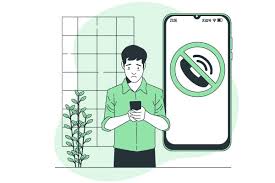Cell Phone Jammers are devices that interfere with cell phone signals by emitting electromagnetic waves of a specific frequency. They are widely used in various scenarios, such as examination rooms, conference rooms, prisons, and other places where interference-free communication is required. However, the use of cell phone jammers has also sparked many discussions about their potential impact, especially on emergency calls.
Cell phone jammers interfere with signal transmission between mobile phones and base stations by emitting strong electromagnetic waves of the same or similar frequency as mobile phone communications. This interference prevents mobile phones from receiving and sending signals normally, thereby achieving a shielding effect. Common mobile phone communication frequency bands include GSM (900 MHz and 1800 MHz), CDMA (850 MHz and 1900 MHz), 3G (2100 MHz), 4G (700 MHz, 800 MHz, 1700/2100 MHz, 1800 MHz, 1900 MHz, 2600 MHz) and 5G (600 MHz, 700 MHz, 3.5 GHz, 26 GHz, 28 GHz).
Emergency calls (such as 911 calls in the United States) have special priority in mobile communication networks. This means that emergency calls will be given priority even in cases of network congestion or poor signal. Communications regulators in various countries have clear regulations on the handling of emergency calls to ensure that users can quickly make emergency calls in emergencies.

The impact of cellphone jammers on emergency calls
- Shielding range and strength
- Blocked frequency bands
- Regulations and specifications
The shielding range and strength of cell phone jammers determine its impact on emergency calls. Generally speaking, jammers are designed and used to interfere with cell phone signals in specific areas, such as conference rooms or examination rooms. Jammers in these places usually do not cover a large area and do not emit too strong interference signals to avoid unnecessary interference. Therefore, outside these limited areas, the impact of cell phone signal jammers on emergency calls is relatively small.
The communication bands used by emergency calls are usually the same as those of ordinary mobile phones. Therefore, if a cell phone signal jammer covers these frequency bands, it is indeed possible to interfere with the dialing and reception of emergency calls. However, some advanced jammers can selectively block certain frequency bands, so that while blocking ordinary communications, the impact on emergency calls is minimized.
Countries have strict regulations and specifications on the use of cell phone signal jammers. For example, in the United States, the Federal Communications Commission (FCC) prohibits the use of unauthorized signal jammers and stipulates that signal jammers shall not affect emergency communications. These regulations ensure the priority and security of emergency calls, and illegal use of signal jammers will face legal penalties.
In actual applications, signal jammers have relatively little impact on emergency calls. For example, when a signal jammer is used in a limited area such as an examination room or conference room, its interference range usually does not cover the surrounding residential areas or public places, so emergency calls can still be made normally. However, in some special cases, such as in large event venues or buildings, the signal jammer has a wider coverage range, which may have a certain impact on emergency calls. In these cases, the operator usually takes additional measures, such as providing backup landlines or reminding users through public broadcasting systems.

How to reduce the impact on emergency calls
- Reasonable settings and use
- Selective shielding technology
- Provide backup communication means
- Regulatory supervision
When using a mobile phone signal jammer, its shielding range and power should be reasonably set to ensure that the signal is effectively shielded only in the necessary area and minimize the impact on the surrounding environment.
Use selective shielding technology to only shield ordinary communication frequency bands and retain the frequency bands for emergency calls. This technology ensures that while interfering with ordinary communications, it does not affect the dialing of emergency calls.

In important places, such as examination rooms and conference rooms, provide backup landlines or dedicated communication equipment to ensure that users can make emergency calls in time in an emergency.
Strengthen the supervision and management of the use of signal shielding equipment to ensure that it complies with relevant regulations and avoid the impact of illegal use on emergency calls.
The use of cellphone jammers in specific places is necessary and reasonable, but attention must also be paid to their potential impact on emergency calls. Under the premise of reasonable setting and use, the impact of signal jammers on emergency calls is controllable. Through selective shielding technology, providing backup communication means and strengthening regulatory supervision, it can effectively ensure that emergency calls are unimpeded in emergency situations. Therefore, when using signal shielding equipment, users and managers should fully understand its working principle and potential impact, and take appropriate measures to ensure the priority and security of emergency communications.


